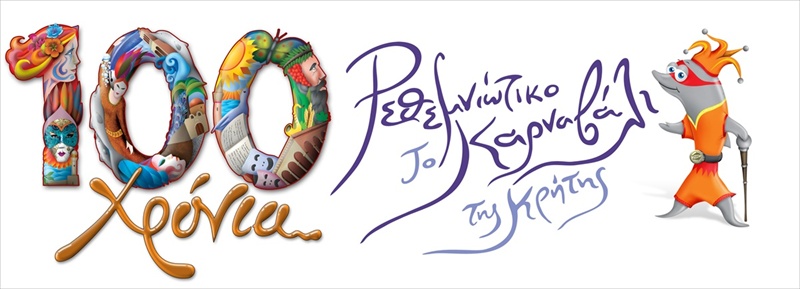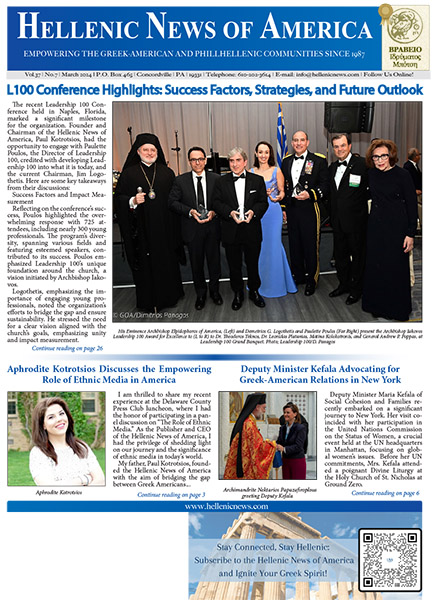
SPECTACULAR CARNIVAL IN RETHYMNON
By Aurelia
Special to the Hellenic News of America
If you missed this year’s Carnival in Rethymnon, don’t be upset, because with this reminder you can plan ahead for next year. Rest assured that an army of volunteers in Rethymnon and twenty surrounding villages is already planning to make Carnival 2015 the most extravagant event ever.
The most elaborate and luxurious Carnival in all of Greece takes place annually in the three-week period before Lent in Rethymnon, Greece’s third largest town, located between Chania and Heraklion. Last year was its 100th anniversary. It is believed the Carnival originated long long ago–in ancient times–as a tribute to Dionysus, god of wine and feasting.
Opening ceremonies of the Carnival are announced by bellman who summon residents of more than twenty villages and everyone in the town of Rethymnon to gather for the festivities. Participants arrive by bus and car and those who live close to the town sometimes come in a procession.
The extravaganza, which requires year-long planning by not hundreds, but thousands of volunteers, has been attended by more than 15,000 revelers in recent years. It is always held during the period known as Apokries in the Greek Orthodox Religion. According to the Carnival’s official website, the literal translation of Apokries in Greek is “saying goodbye to meat,” while the Latin roots of the word “Carnival” are “carne,” or “meat,” and “vale,” or “goodbye.”
Every aspect of this annual event can be accurately described as “over the top.” Participating in the Carnival requires that you enter a world of fantasy, hijinks, and revelry while displaying what the Greeks affectionately call “kefi,” or “high spirits. Examples of “over the top,” include these facts: it is the biggest Carnival in all of Greece, the entire town becomes a festival for three weeks, thousands of participants dress in often outrageous costumes, guests are entertained with a four hour “Kantada, a four-hour serenade of bel canto musical influences bycarnival groups who parade through the old town, visiting ever corner and alley.
Ancient Greek serenades fill every corner of the city of Rethymno. Beginning at Platia Iroon Polytechniou, on the streets Koronaiou, Arabatzoglou, Petihaki, Arkadiou, Tsouderon, Ethniki Antistaseos, ending at the Magali Porta. Songs are sung by The Children’s Choir of the Municipality of Rethymno, directed by Isadora Chalkiadaki, and the European Choir of the Music School and Gymnasium-Lykio of Episkopi, led by Elli Perisoglou. Local musicians provide accompaniment.
The evening parade of carnival floats defies description, and instead of honoring the effigy of the art work voted “Carnival King,” the entry chosen as the best in the event is ceremoniously burned by the sea side on Eleftherios Venizelos Street, on the Eastern beach of the Old Town.
In addition to what happenes in Rethymnon proper, there are ancillary activities in more than twenty villages circling the town and these include staging of “the abduction of the bride,” “egg collecting,” “treasure hunts,” and the reenactment of various and sundry folklores integral to Crete.
It is not an overstatement to say that the Carnival has become “an institution,” that participants are “passionate” about planning and executing this event, and that everyone experiences “kefi,” the high spirits that come with celebrating life and tradition. It seems that the majority of Rethymnon’s residents live for the annual carnival and spend all year in preparation for it. At Carnival time, the need to celebrate becomes overwhelming.
The celebration ends officially on the day after what is called “Tyrofagis Sunday.” This day is “kithara Defters” or “Clean Monday,’ and it marks the end of Apokries and the first day of Lent. Fasting begins. During this period, no meat, fish, eggs, dairy products or oil are consumed for the forty-nine days leading to Easter. Also, according to the Orthodox tradition, no weddings or celebrations can take place.
When the Carnival is finally over, it is time for everyone to relax. On “Clean Monday” it has, therefore, become a tradition to pack a picnic lunch and make an excursion to the beach or the mountains. One would think that after all of that celebrating, revelers would be content to soak up the sun, but that is not the case.
When you visit the beaches or mountain retreats, you will see a sky full of kites. Rather than unwinding by stretching out and soaking up the sun, yesterday’s celebrants are engaged in still another activity, but one decidedly less strenuous. They are flying kites. There must be hundreds and hundreds of kites in the air. You can barely see the sky for the kites.
The end of Carnival, just like its beginning and just like the festivities that stretch over three weeks, is a marvelous, joyous, “over the top” extravaganza. Don’t miss it.







